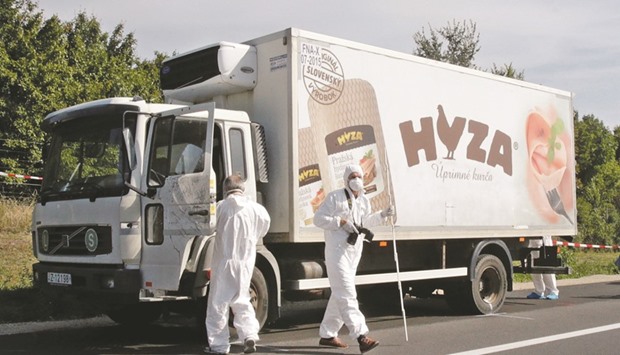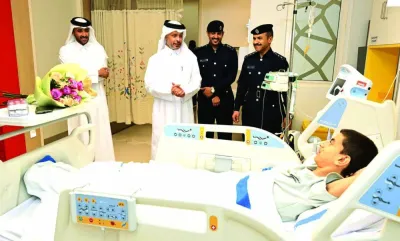In late August of last year, 71 refugees from Syria, Iraq and Afghanistan were crammed into the back of a small lorry that left the Serbian-Hungarian border and drove towards Budapest.
The migrants had about 2sq ft of space each.
The back doors of the truck were wired shut.
The truck body had no vents or working ventilation equipment.
Within hours, the truck was abandoned.
All of the migrants — 59 men, eight women and four children — had suffocated.
Their deaths shocked Europe as it struggled to cope with the biggest influx of migrants since World War II.
Hungarian and European police yesterday concluded an investigation into the deaths, senior officers told a news briefing as they prepared to hand the case over to prosecutors.
Austrian and Hungarian authorities worked in tandem to uncover the network of smugglers, who were shipping west as many migrants as possible, ignoring their safety, Hungarian police colonel Zoltan Boross said.
“The unscrupulous greed of the crime syndicate’s leader led to this tragedy,” Boross said.”Tellingly, the day after this first vanful of corpses was found, the same syndicate crammed 67 migrants into another van just like that.”
Police caught the second van in Gols, Austria, in time to save the migrants, but “the smugglers would have kept at their business despite the tragedy,” Boross said.
The European police agency Europol sees such cases often; the 71 deaths were the worst but far from the only time human smuggling claimed casualties, Robert Crepinko, the chief of Europol’s human smuggling unit, told reporters.
“It’s a booming criminal market,” he said. “More than 12,000 new suspects on migrant smuggling have been identified this year ... We estimate that 5bn euros to 6bn euros ($5.60bn to $6.7bn) were made in this criminal market in Europe last year.”
The syndicate behind the 71 deaths included an Afghan ring leader, nine Bulgarians who ran the actual driving and a Bulgarian-Lebanese who purchased trucks, Boross said.
Using travel documents, mobile phones found in the truck, and DNA testing of possible family members, authorities eventually identified 70 of the 71 victims.
The process took weeks.
Tracking down the smugglers took much less time. Thanks to a purchase contract for the van left in the driver’s booth, several members were found within 24 hours of the incident.
Eight of them are under arrest, four for murder and four for human trafficking. Three more are on the run. The ring leader had been in Hungary since 2013 and had smuggled migrants since February 2015.
According to Boross, the journey that ended in the 71 deaths began when the Afghani ring leader liaised with an accomplice in Serbia, who sent him migrants grouped by destination across Hungary’s border.
They would arrive at dawn and board trucks headed west in what had become a well-oiled operation.
At 3am on August 27, 2015, a Bulgarian driver left the city of Kecskemet in a Hungarian Volvo truck and travelled south.
He picked up the 71 migrants near a highway crossing on the Serbian-Hungarian border and headed for Budapest.
Within 100km, oxygen in the back was dangerously low.
The driver of the lorry and spotters following him in an Audi and a BMW made several stops, but they pressed ahead despite the brewing catastrophe. The oxygen ran out as the van and the cars used a highway ring to skirt Budapest.
According to medical experts and vehicle experts, the migrants died right around the time the van took the off-ramp for the M1 motorway to Vienna. Still the van pressed on. It crossed into Austria, where it stopped by the road and the Audi picked up the lorry’s drivers. The lorry was found around midday the next day with the entangled bodies in the hold.

An August 27, 2015, file photo of forensic police officers inspecting a parked truck on a motorway near Parndorf, Austria.


